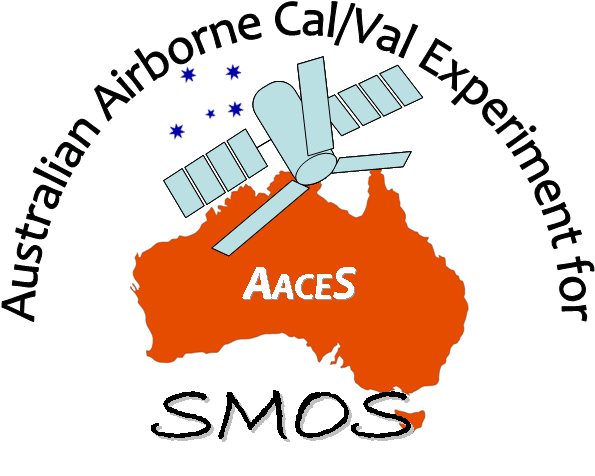

 |
Welcome to the | |
 |
AACES-1 Project | |
| Australian Airborne Cal/val Experiment for SMOS |
|
Home page
Google Earth (KML file) Workplan SMOS AMSR-E WindSat ASCAT PALSAR ASAR MODIS MTSAT-1R ASTER Landsat CHRIS AVNIR-2 PLMR data Thermal Infrared data Multi-Spectral data Monitoring stations Soil moisture sampling Vegetation sampling Roughness sampling Campaign shapefiles DEM Land use Climate data Rainfall data Soil classification Soil water capacity Soil texture analysis AACES homepage Moisturemap homepage |
Polarimetric L-band Multibeam Radiometer (PLMR) Polarimetric L-band Multibeam Radiometer (PLMR)
Polarimetric L-band Multibeam Radiometer (PLMR)
The Polarimetric L-band Multibeam Radiometer (PLMR) measures both V and H polarisations using a single receiver with polarisation switch at incidence angles ±7°, ±21.5° and ±38.5° in either across-track (pushbroom) or along-track configuration. In the normal pushbroom configuration the 3dB beamwidth is 17° along-track and 14° across-track resulting in an overall 90° across track field of view. The instrument has a frequency of 1.413GHz and band width of 24MHz, with specified NEDT and an accuracy better than 1K for an integration time of 0.5s, and 1K repeatability over 4 hours.
PLMR observationsDuring the AACES-1 campaign, 10 patch flights (P01 - P10) and 3 transect flights (T00 - T02) were carried out. Airborne, dual-polarized brightness temperature observations of 10 patch flights (P01 - P10) and the second transect flight (T01) are shown as an example below. All brightness temperature data can be downloaded via the Download Centre. |
|
Created: January 2010 Last Modified: August 2010 Maintainer: YE Nan, Ye.Nan@monash.edu |